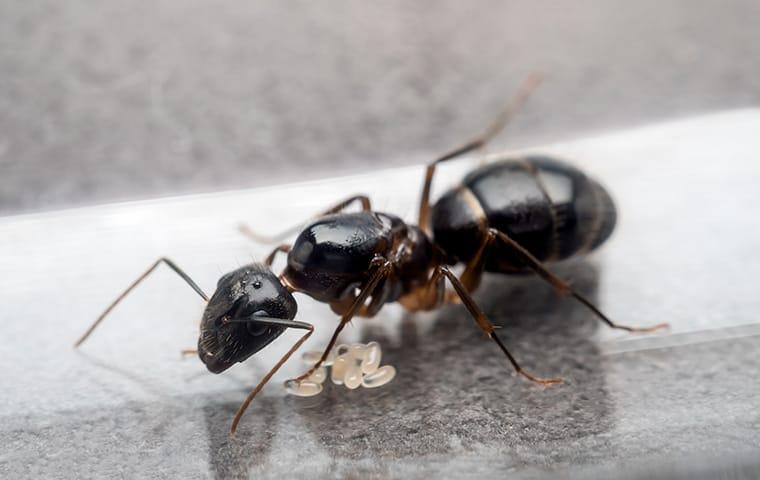Spring has sprung in the Midwest, and as homeowners emerge from the winter months, they may find themselves facing an unwelcome resurgence of pests, including Carpenter Ants. These industrious insects can cause significant damage to homes by excavating wood to create nests and establish their colonies. Knowing where carpenter ants are likely to nest is crucial for early detection and effective control, preventing costly damage and protecting the structural integrity of your home.
Preferred Nesting Sites: Moist and Decaying Wood
Carpenter ants are attracted to moist and decaying wood, which provides ideal conditions for their nests. They often target areas with existing moisture problems, such as leaky roofs, plumbing leaks, or areas with poor ventilation. Within your home, common nesting sites include:
- Wall voids: The spaces between wall studs offer a protected and hidden environment for carpenter ants to build their nests.
- Attics: Attics, especially those with moisture issues or poor insulation, can be attractive nesting sites.
- Crawl spaces: Damp and dark crawl spaces provide ideal conditions for ant colonies.
- Window and door frames: Wood framing around windows and doors, especially if exposed to moisture, can be susceptible to carpenter ant infestations.
- Underneath sinks and bathtubs: Leaky pipes and damp areas under sinks and bathtubs can attract carpenter ants.
Outdoor Nesting Sites
Carpenter ants don’t limit their nesting activities to the indoors. They can also establish colonies in various outdoor locations, including:
- Trees: Dead or decaying trees, stumps, and logs provide ideal nesting sites for carpenter ants.
- Firewood: Storing firewood close to your home can attract carpenter ants and provide a pathway for them to enter your house.
- Landscaping timbers: Landscaping timbers, especially those in contact with the ground, can be susceptible to carpenter ant infestations.
Signs of a Carpenter Ant Infestation
Identifying a carpenter ant infestation early is crucial for preventing extensive damage to your home. Here are some signs to watch out for:
- Sawdust-like frass: Carpenter ants leave behind a fine, sawdust-like material called frass near their nesting sites. This is often found beneath wooden structures or in areas where they are actively excavating.
- Rustling sounds: You may hear faint rustling or crackling sounds coming from within walls or wooden structures, especially at night when carpenter ants are most active.
- Winged ants: During the spring, you might see winged carpenter ants swarming, indicating a mature colony nearby.
- Visible Ants: While not always a sure sign, seeing large black or reddish-black ants around your home, especially near wood, could indicate a carpenter ant problem.
Professional Help for Carpenter Ant Control
If you suspect a carpenter ant infestation, it’s essential to contact a professional pest control service like Pest Control Consultants (PCC). Serving Polo, IL, Princeton, IL, Clinton, IA, La Valle, WI, Springfield, IL, Sycamore, IL, Barrington, IL, Delavan, WI, and the surrounding areas, our experienced technicians can accurately identify nesting sites, implement effective treatments to eliminate the colony, and provide ongoing prevention strategies to protect your home from future infestations.
Conclusion
Carpenter ants can be a significant threat to Midwest homes, especially during the spring when they become more active. By understanding their nesting preferences and recognizing the signs of an infestation, you can take proactive steps to protect your property.
Contact us now expert assistance and comprehensive solutions to keep your home carpenter ant-free this spring.
Get help now